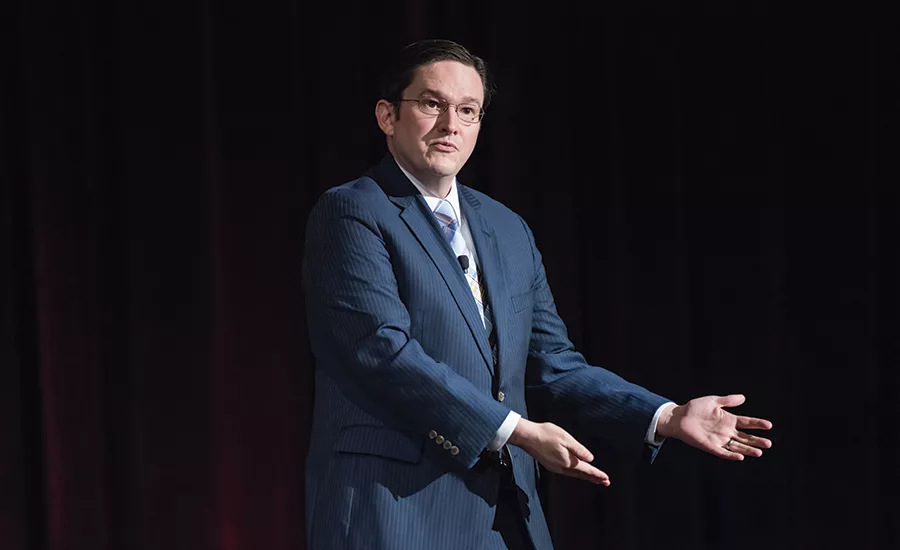Best of Success: Drones for Commercial Use: A Legal Perspective
Trent Cotney


Trent Cotney, of Trent Cotney, P.A. Construction Law Group, is a Florida Bar Board Certified construction lawyer who specializes in roofing litigation and arbitration. He’s defended roofers on a number of issues including construction defect claims, OSHA citations and bid protests. In addition, he also creates roofing-related contracts for all kinds of roofing industry professions. He’s affiliated with several industry organizations, including the National Roofing Contractors Association (NRCA), the West Coast Roofing Contractors Association and the Florida Roofing and Sheet Metal Association.
Cotney’s session at this year’s Best of Success detailed the latest on drones for commercial use, from a legal perspective. He leveraged his vast experience in the roofing industry to showcase to attendees the federal application process for drone usage, as well as the liability issues and precautions associated with drones. He also touched on the benefits and risks of drones.
Cotney started out by explaining to attendees just how rapidly drone laws are shifting, and how important it is to remain in the loop. “Literally, less than a month ago, the law was completely different, that’s how fast things are changing. And I guarantee you, six months from now, the laws may change again,” he said.
Cotney gave a brief overview into the evolution of drones, or Unmanned Aerial Systems (UAS), that ranged from how they’re built to their rapidly-evolving capabilities. “These are not toys any longer,” Cotney said. He also discussed how new technology is perceived in the roofing industry, both positively and negatively. He offered two viewpoints: one being the accepting interpretation where employers are eager to try new things that they believe will benefit their business. The other viewpoint garnered a bit more skepticism, more of a — in Cotney’s words — “If it isn’t broke, don’t fix it” mantra. Cotney drew on a past memory of his grandfather, who worked in construction, and believed in doing things the old, traditional way. “He viewed roofing as a craft, as an art. He did not trust any kind of automated equipment,” he explained.
When Cotney first spoke at BOS in 2011, drones were far less popular than they are now. This year, he asked the room of attendees how many of them used drones in their business, and roughly a third of the audience raised their hands — emphasizing how popular this technology has become in just five years.
With drone use for commercial purposes becoming more popular, federal regulations are changing rapidly — fast enough that some UAS manufacturers are struggling to keep up.
“The government is trying to catch up with the technology,” Cotney said. He also gave an overview of state rules, detailing that they, for the most part, address privacy concerns, trespassing and creating a public nuisance. Some of the more notable regulations include:
Drones remaining in visual line of sight of the pilot at all times.
No first-person-view cameras.
Without special permission, drones can only operate during daylight hours or twilight with appropriate lighting.
They can only have a maximum groundspeed of 100 mph and maximum altitude of 400 feet.
Pilots must have a “remote pilot airman certificate” issued by the Federal Aviation Administration.
Cotney concluded by urging attendees to stay updated and informed. “The goal is to take what I’m saying and try to implement it with what you’re doing so that you make sure that you can continue to use drones effectively.”
Check out webinars from Best of Success on demand until December 26!
Looking for a reprint of this article?
From high-res PDFs to custom plaques, order your copy today!




